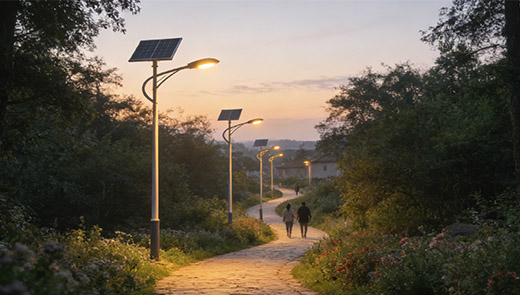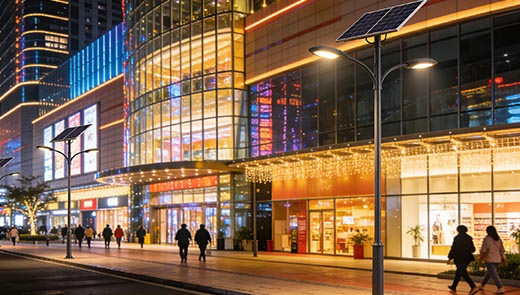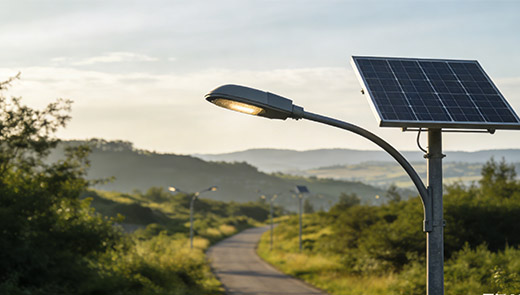Solar Street Lights: Five Ways They Reduce Expenses
In municipal lighting, rural road illumination, and park infrastructure projects, traditional street lights have long been constrained by the dilemma of “high investment and high operational costs.” From initial wiring and grid integration to frequent maintenance, they continuously consume substantial resources, placing significant pressure on local finances and business operations. Solar street lights, leveraging clean energy and streamlined system design, reduce expenses through multiple pathways throughout their entire life cycle, emerging as an optimal solution balancing economic efficiency and environmental sustainability. Below, we detail how solar street lights achieve cost reduction across five core dimensions.
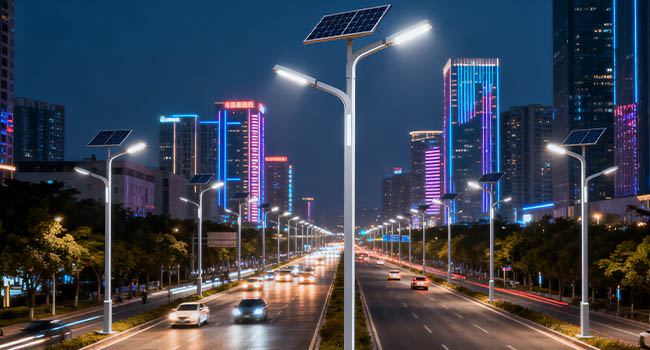
Lower Installation Costs
The Installation Pain Points of Traditional Street Lights
Traditional street light installation heavily relies on municipal power grids, requiring the entire process of “trenching and cable laying, wiring and debugging, and grid connection acceptance.” This involves renting specialized equipment like excavators and cutters for road excavation, purchasing large quantities of cables, conduits, and connectors, and coordinating with power authorities for grid connection procedures. The process involves numerous steps, with labor and material costs accounting for a significant portion of the total expense, and the preparatory and construction periods are relatively lengthy.
Installation Advantages of Solar Street Lights
Solar street lights operate independently of the grid. The integrated system combines solar panels, energy storage batteries, LED lighting, and smart controllers. Installation requires only two core steps: first, securing the hot-dip galvanized light pole to a precast concrete foundation; second, adjusting the solar panel orientation based on local sun angle (typically aligned with latitude). No road excavation or additional wiring is required, reducing labor costs by nearly half and significantly lowering material expenses. Installation time is shortened by two-thirds compared to traditional street lights, further minimizing hidden investments in manual management.
Less Maintenance Cost
Maintenance is the “money pit” for traditional street lights. Solar street lights minimize maintenance costs through simplified structures and durable components, manifested in three key areas:
Less Repairs
Traditional street lights feature complex internal structures with vulnerable components like ballasts, terminals, and grid connection wires. Under high temperatures, humidity, or heavy rain, they are prone to short circuits, corrosion, or poor connections. This necessitates 3-4 scheduled maintenance sessions annually, with ongoing labor and spare part costs for repairs. Solar street lights eliminate ballasts and external wiring. Their core components—solar panels, energy storage batteries, and LED bulbs—feature sealed designs with IP65 or higher protection ratings, withstanding harsh conditions like heavy rain, dust storms, and high temperatures. Their annual failure rate is only one-sixth that of traditional lights, drastically reducing maintenance frequency and associated expenses.
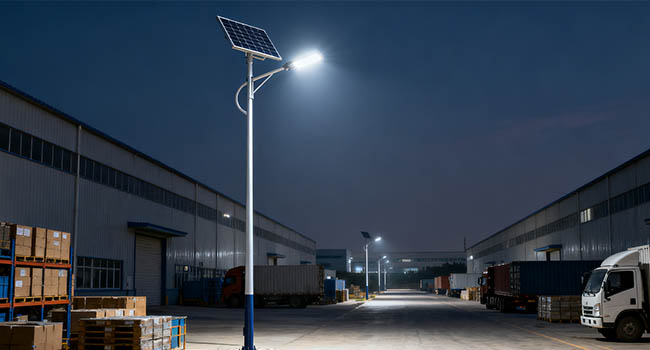
Longer-Lasting LEDs
Incandescent and halogen bulbs commonly used in traditional street lights have extremely short lifespans, requiring replacement every 1-3 years on average. Replacing them necessitates scaffolding setup, resulting in high labor costs. In contrast, the standard LED light source in solar street lights has a theoretical lifespan of up to 20 years. Its light decay is slow, maintaining over 80% of its initial luminous efficacy even after 10 years of use. Under normal operating conditions, the LED light source in solar street lights requires no frequent replacement, eliminating the labor and material costs associated with repeatedly replacing light sources in traditional street lights.
Less Annual Maintenance
Annual maintenance for solar street lights involves only 1-2 cleanings of the solar panels and 1 battery performance check, requiring no complex operations or significant consumables, resulting in minimal overall investment. Traditional street lights, however, require annual maintenance including circuit inspections, ballast replacements, light source replacements, grid connection debugging, and more. These involve multiple steps, high consumable usage, and coordination with power authorities, resulting in significantly higher annual costs than solar street lights. Over a 10-year cycle, the total maintenance investment for solar street lights is only 1/5 that of traditional street lights, yielding substantial cumulative savings.
Reduced Infrastructure and Replacement Costs
Infrastructure Dependency Differences
Traditional street lights heavily rely on municipal grid infrastructure for normal operation. If the local grid is outdated (e.g., insufficient transformer capacity, aging lines), resources must first be invested to upgrade the grid—including replacing high-capacity transformers and renovating transmission lines. The cost of these upgrades constitutes a significant portion of the total project investment. Solar street lights, however, operate independently of the grid. In areas with limited grid coverage—such as remote villages or newly developed zones—they can be installed and used immediately without requiring additional transmission lines, eliminating substantial infrastructure upgrade expenses.
Equipment Replacement Cost Comparison
Traditional street lights have a total lifespan of only 8-12 years. Upon expiration, the entire system—including poles, light sources, and control systems—must be replaced, resulting in high equipment renewal costs. Solar street lights, however, offer a longer lifespan: poles made of hot-dip galvanized steel provide corrosion resistance lasting up to 25 years. Solar panels typically carry a 20-25 year warranty. While storage batteries require replacement every 10-15 years, the cost per battery unit is only one-third of the total replacement cost for a traditional street light system. Considering both iteration cycles and per-cycle investment, solar street lights offer superior long-term economic efficiency, effectively reducing the financial pressure caused by frequent replacements.

Access to Incentives and Tax Breaks
To promote clean energy adoption, numerous national and local governments have introduced supportive policies for solar street lights, further lowering project costs. These primarily fall into two categories:
Government Grants
Many regions include solar street lights in public welfare projects like “Rural Revitalization Lighting Initiatives” and “Green City Construction Projects,” providing direct funding subsidies covering 30% to 50% of equipment costs. Certain solar lighting projects in industrial parks or scenic areas qualify for up to 20% reimbursement of construction costs. Border regions may also apply for support through the “Border Development and Prosperity” special allocation, with some projects receiving funding covering over 60% of initial investment. These policy benefits directly reduce upfront capital pressure and shorten the project payback period.
Tax Benefits
Enterprises or municipal entities purchasing solar street lights can enjoy multiple tax incentives: For Value-Added Tax (VAT), eligible solar product sales qualify for standard rates, with certain public welfare projects eligible for a “50% immediate refund upon collection” incentive. For Corporate Income Tax, under the Corporate Income Tax Law, purchasing energy-saving equipment like solar street lights allows a 10% tax credit against the current year's taxable income based on the equipment investment. Any unused credit can be carried forward for tax credits over the next five tax years. For depreciation, solar street lights qualify for accelerated depreciation over 5-8 years (compared to 15-20 years for traditional lights), reducing taxable income and improving cash flow in the short term. These incentives effectively lower initial investment burdens and enhance overall project profitability.
Environmental and Social Savings
Beyond direct cost reductions, solar street lights minimize “hidden expenses”—costs not directly reflected in project invoices but critical for long-term cost control:
Environmental Costs
Conventional street lights rely on thermal power generation, consuming substantial electricity annually with high carbon emissions. As carbon market mechanisms mature, high-emission projects face additional costs for purchasing carbon credits. Simultaneously, pollutants like sulfur dioxide and nitrogen oxides from thermal power generation exacerbate air pollution, indirectly increasing public healthcare expenditures (e.g., respiratory disease treatment costs). Solar street lights utilize clean energy with zero carbon emissions and zero pollution, completely avoiding these environmental costs while supporting regional “dual carbon” goals and laying the groundwork for securing future environmental project funding.
Social Costs
Traditional street lights are highly susceptible to power grid failures. Factors such as heavy rain, typhoons, and aging wiring often cause power outages, resulting in interrupted road lighting. Statistics show that during lighting outages, the incidence of nighttime traffic accidents increases by 40%, while public security incidents rise by 25%. This indirectly leads to social costs including medical rescue operations, police deployment, and property damage. Solar street lights, equipped with built-in energy storage batteries, can maintain illumination for 3-7 days even during consecutive rainy periods, offering significantly greater lighting stability than traditional systems.
Solar street lights achieve comprehensive life cycle cost optimization through five pathways: reduced upfront investment in installation, lower maintenance requirements in operation and maintenance, increased policy incentives, and minimized hidden costs. For municipal authorities, enterprises, or rural projects prioritizing cost-effectiveness, choosing solar street lights is not only a “green choice” aligning with carbon neutrality policies but also an “economic choice” that reduces long-term operational costs. They fulfill lighting requirements while continuously supporting cost control, delivering “one-time investment, long-term benefits.”

